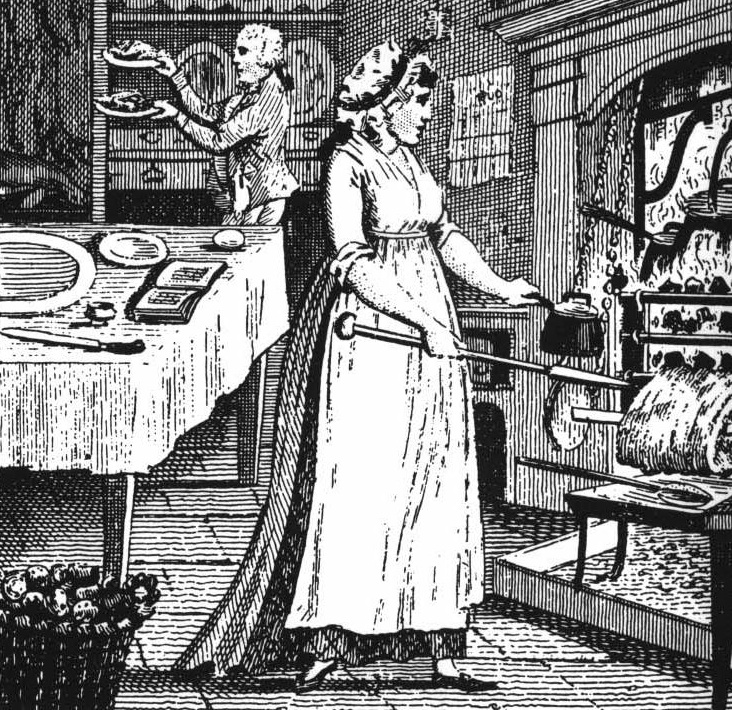
Refreshments
Refreshments for the Vauxhall Masquerade will be prepared from recipes of the late 18th and early 19th century by food historian Irene Urban and her crew and will include macaroons, salamagundi, fools, gingerbread biscuits (cookies), shaved ham and beef, Naples biscuits, fruit, cheese, pound cake, and lemonade.
Many of the foods will be recognizable to modern palates, having been popular for over two hundred years, although the older versions may taste a little different than their modern descendents
Never trouble Ham House, or its inmates at all,
For a ghost, that may be but a sham,
But seek in a sandwich that's cut at Vauxhall,
For the true apparition of Ham.
The thinness of the meats at Vauxhall, picturesquely described as "sliced cobwebs", was legendary. "Shaved" ham was the food most famously associated with Vauxhall, and the thinly-sliced beef was a running joke. One woman's memoirs described a waiter pretending to save a plate of meat from blowing away in a gentle breeze.
"All sorts of Ice, Fruits and Creams in the best Italian manner..."
Ices, both ice cream and sorbet, came to London in the mid-18th century when a shop called "The Pot and the Pineapple" was opened in Berkeley Square by an Italian pastry cook. Later it was sold to James Gunter, and under his name becamse the famous Gunter's Tea Shop, one of the most fashionable shops in Regency London, where ladies and gentlemen stopped for a cool ice. We will be serving both plain fruit and fruit sorbets to cool us off between dances.
"A pound fine Sugar well dried & sifted a pd of new churn'd Butter beat into it with a wooden slice..."
From the recipe of Jane Austen's aunt, Mrs. Leigh-Perrot, comes a recipe for a "heart", or pound, cake very similar to those of today, but with the addition of currants and spiced by nutmeg and cinammon rather than today's more popular lemon.
Fools
The fool is a traditional English dessert dating back to the sixteenth century or earlier which mixes fruit and cream into a rich cold pudding.
"...a string of dawdling children round the baker's little bow-window eyeing the gingerbread..." -- from Emma, by Jane Austen
Gingerbread biscuits (cookies to Americans) have a rich flavor thanks to the molasses in them, and are mildly spiced with cinnamon and ginger. The presence of caraway seeds may surprise people, but they were popular in numerous baked goods in the Regency.
Naples biscuits
Known today as "ladyfingers", these simple sponge cakes are a traditional component of trifle, but the rose-flavored Regency ones make a delightful snack all on their own. Our recipe derives from one in A Receipt Book of Cookery 1698.
Macaroons
Unlike today's coconut macaroons or French macaroons, those of the Regency era were made from ground almonds. These simple treats are both gluten- and dairy-free. Our version is made from a recipe in Receipts for Pastry, Cakes, and SWeetmeats by a Lady of Philadelphia, printed in Boston in 1828.
"...the salamagundy may be laid in rows, or put into the half-whites of eggs, which may be made to stand upright by cutting off a bit at the round end..." -- from A New System of Domestic Cookery, London, 1806
Salamagundi refers to one of a variety of dishes all featuring a mixture of colors and flavors plated together. While some versions were more a salad and other more a kind of antipasto or mixed-meat platter, ours is presented in the form of stuffed eggs.
"...Lemonade, will be given only at Beaufets opened for the Purpose, in the Ball-Rooms..." -- from a handbill for the Vauxhall Jubilee, 1786